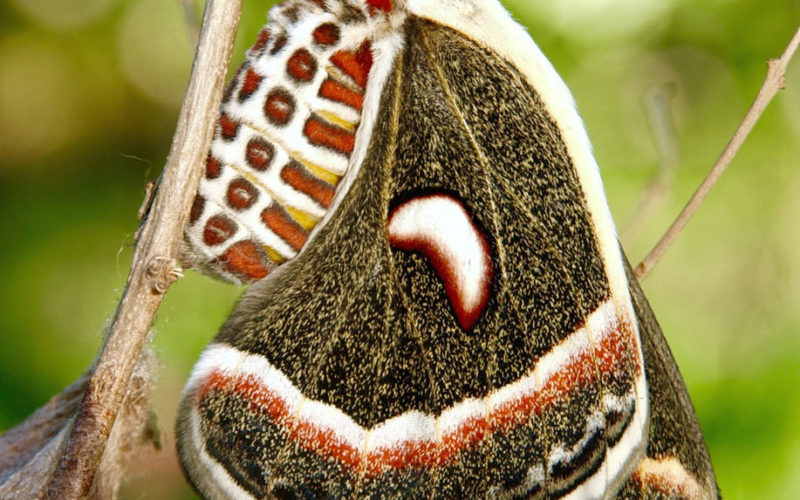Lepidoptera take wing during Crystal Bridges program
BECCA MARTIN-BROWN
bmartin@nwadg.com
“Vincent van Gogh painted a great painting of the giant peacock moth that is in the Van Gogh Museum in Amsterdam.
“The great American painter Charles Burchfield painted a summer storm with a cecropia moth in it called, ‘The Moth and the Thunderclap.’
“Audubon painted moths in his paintings of birds.
“[And] of course, there is the giant moth in the 1961 Japanese film, ‘Mothra.’”
Don Steinkraus, an entomologist at the University of Arkansas in Fayetteville, doesn’t hesitate to link moths to art. And since July 20-28 is National Moth Week, it seemed to him a perfect time to talk about them at Crystal Bridges Museum.
“Moths are often just as beautiful as butterflies, but because they are nocturnal are not seen as often,” Steinkraus says. “Many are small, many are dull colored — brown, tan, gray — but when examined closely are found to be very subtle and beautiful in coloration. Some, such as luna moths, cecropia moths, regal moths, are large and dramatic. Others such as the hummingbird or sphinx moths look like hummingbirds and are great flyers, have long tongues for sipping nectar and are also very pretty.”
Moths are useful, too, Steinkraus points out, explaining that many of them serve humans during their metamorphosis.
“This most beautiful, desirable, precious fabric, silk, that has influenced human history so much and still is a major economic force in fashion, trade, etc., comes from the silk cocoon of a moth domesticated in China thousands of years ago,” he explains.
But like many Lepidoptera — the name is derived from Greek for scale plus wing — moths are endangered, even though there are “many more species of moths in the world than butterflies.”
“All the lights humans are putting up everywhere are drastically harming many creatures, especially moths,” Steinkraus says. To support moths, “use artificial lights as little as possible; allow ‘untidy’ areas in your yards and gardens where moths (and butterflies) can pupate; use chemical poisons sparingly in order not to kill non-target insects such as moths, butterflies, pollinators; [and] plant diverse native plants that larvae of our native moths can eat.”
__
FAQ
Discover The Grounds:
National Moth Week
WHEN — 7-9 p.m. July 19
WHERE — Crystal Bridges Museum in Bentonville
COST — Free
INFO — Register at crystalbridges.org
BONUS — A walk to see moths will follow Don Steinkraus’ talk.



